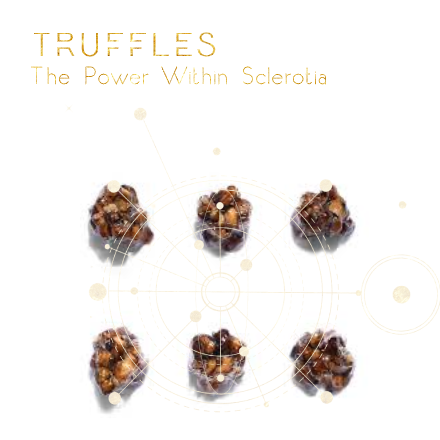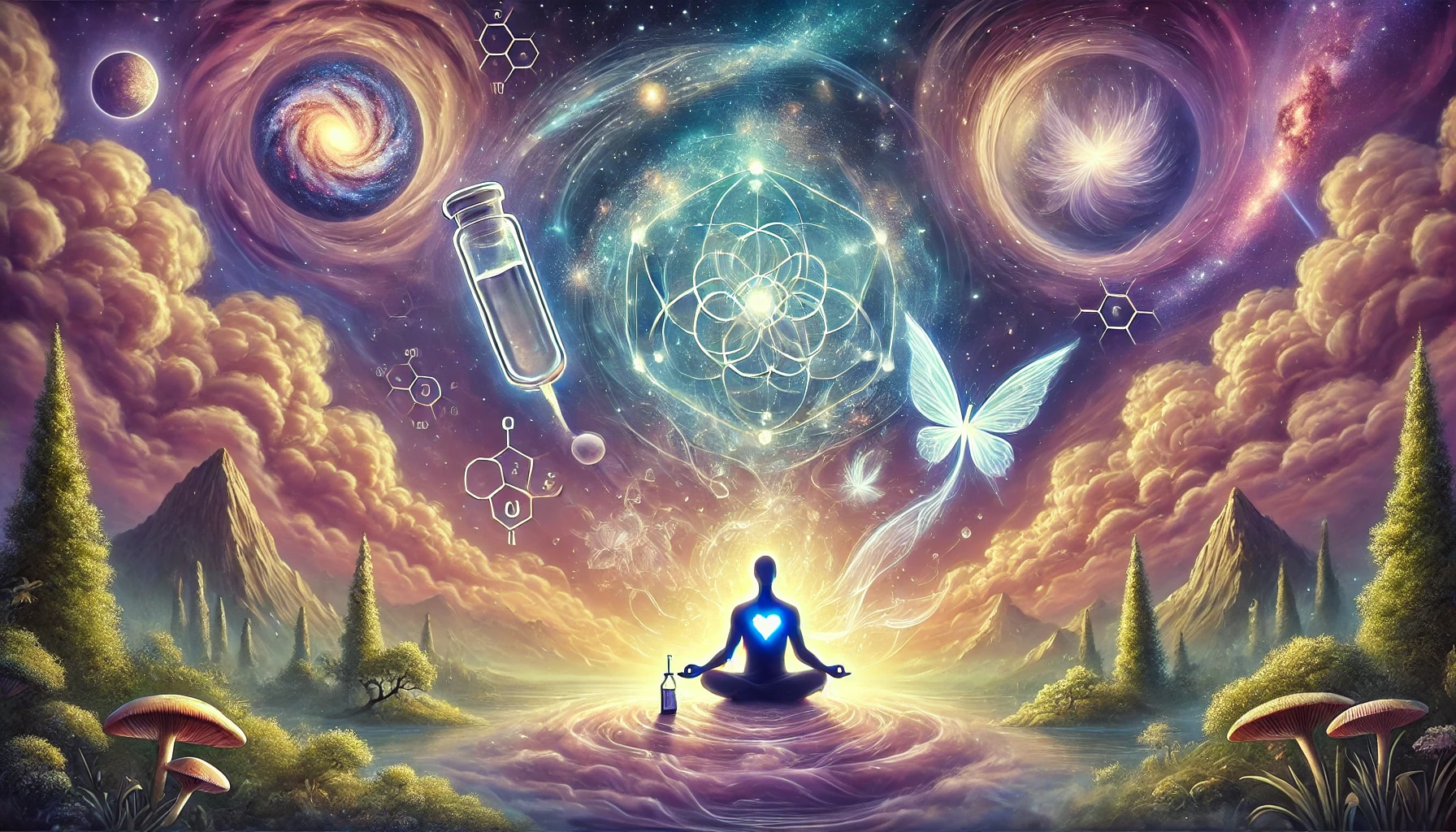
How psilocybin may rewire the brain to ease depression, anxiety and more.
Shrooms, Alice, tweezes, mushies, hongos, pizza toppings, magic mushrooms – everyday lingo for psychedelic mushrooms seems to grow with each generation. Yet leading mycologist Paul Stamets believes it’s time for fans of psilocybin mushrooms to leave such childish slang behind.

“Let’s be adults about this. These are no longer ‘shrooms.’ These are no longer party drugs for young people,” Stamets told CNN. “Psilocybin mushrooms are nonaddictive, life-changing substances.”
Small clinical trials that have shown that one or two doses of psilocybin, given in a therapeutic setting, can make dramatic and long-lasting changes in people suffering from treatment-resistant major depressive disorder, which typically does not respond to traditional antidepressants.
Based on this research, the US Food and Drug Administration has described psilocybin as a breakthrough medicine, “which is phenomenal,” Stamets said.
Psilocybin, which the intestines convert into psilocin, a chemical with psychoactive properties, is also showing promise in combating cluster headaches, anxiety, anorexia, obsessive-compulsive disorder and various forms of substance abuse.
“The data are strong from depression to PTSD to cluster headaches, which is one of the most painful conditions I’m aware of,” said neurologist Richard Isaacson, director of the Alzheimer’s Prevention Clinic in the Center for Brain Health at Florida Atlantic University.
“I’m excited about the future of psychedelics because of the relatively good safety profile and because these agents can now be studied in rigorous double-blinded clinical trials,” Isaacson said. “Then we can move from anecdotal reports of ‘I tripped on this and felt better’ to ‘Try this and you will be statistically, significantly better.’”
Your brain on mushrooms
Classic psychedelics such as psilocybin and LSD enter the brain via the same receptors as serotonin, the body’s “feel good” hormone. Serotonin helps control body functions such as sleep, sexual desire and psychological states such as satisfaction, happiness and optimism.
People with depression or anxiety often have low levels of serotonin, as do people with post-traumatic stress disorder, cluster headaches, anorexia, smoking addiction and substance abuse. Treatment typically involves selective serotonin reuptake inhibitors, or SSRIs, which boost levels of serotonin available to brain cells. Yet it can take weeks for improvement to occur, experts say, if the drugs even work at all.
With psychedelics such as psilocybin and LSD, however, scientists can see changes in brain neuron connectivity in the lab “within 30 minutes,” said pharmacologist Brian Roth, a professor of psychiatry and pharmacology at the University of North Carolina at Chapel Hill.
“One of the most interesting things we’ve learned about the classic psychedelics is that they have a dramatic effect on the way brain systems synchronize, or move and groove together,” said Matthew Johnson, a professor in psychedelics and consciousness at Johns Hopkins Medicine.
“When someone’s on psilocybin, we see an overall increase in connectivity between areas of the brain that don’t normally communicate well,” Johnson said. “You also see the opposite of that – local networks in the brain that normally interact with each other quite a bit suddenly communicate less.”
It creates a “very, very disorganized brain,” ultimately breaking down normal boundaries between the auditory, visual, executive and sense-of-self sections of the mind – thus creating a state of “altered consciousness,” said David Nutt, director of the Neuropsychopharmacology Unit in the Division of Brain Sciences at Imperial College London.
And it’s that disorganization that is ultimately therapeutic, according to Nutt: “Depressed people are continually self-critical, and they keep ruminating, going over and over the same negative, anxious or fearful thoughts.
“Psychedelics disrupt that, which is why people can suddenly see a way out of their depression during the trip,” he added. “Critical thoughts are easier to control, and thinking is more flexible. That’s why the drug is an effective treatment for depression.”
The growth of brain cells
There’s more. Researchers say psychedelic drugs actually help neurons in the brain sprout new dendrites, which look like branches on a tree, to increase communication between cells.
“These drugs can increase neuronal outgrowth, they can increase this branching of neurons, they can increase synapses. That’s called neuroplasticity,” Nutt said.
That’s different from neurogenesis, which is the development of brand new brain cells, typically from stem cells in the body. The growth of dendrites helps build and then solidify new circuits in the brain, allowing us to, for example, lay down more positive pathways as we practice gratitude.
“Now our current thinking is this neuronal outgrowth probably doesn’t contribute to the increased connectivity in the brain, but it almost certainly helps people who have insights into their depression while on psilocybin maintain those insights,” Nutt said.
“You shake up the brain, you see things in a more positive way, and then you lay down those positive circuits with the neuroplasticity,” he added. “It’s a double whammy.”
Interestingly, SSRIs also increase neuroplasticity, a fact that science has known for some time. But in a 2022 double-blind phase 2 randomized controlled trial comparing psilocybin to escitalopram, a traditional SSRI, Nutt found the latter didn’t spark the same magic.
“The SSRI did not increase brain connectivity, and it actually did not improve well-being as much as psilocybin,” Nutt said. “Now for the first time you’ve got the brain science lining up with what patients say after a trip: ‘I feel more connected. I can think more freely. I can escape from negative thoughts, and I don’t get trapped in them.’ “
Taking a psychedelic doesn’t work for everyone, Johnson stressed, “but when it works really well it’s like, ‘Oh my god, it’s a cure for PTSD or for depression.’ If people really have changed the way their brain is automatically hardwired to respond to triggers for anxiety, depression, smoking – that’s a real thing.”
How long do results last? In studies where patients were given just one dose of a psychedelic “a couple of people were better eight years later, but for the majority of those with chronic depression it creeps back after four or five months,” Nutt said.
“What we do with those people is unknown,” he added. “One possibility is to give another dose of the psychedelic – we don’t know if that would work or not, but it might. Or we could put them on an SSRI as soon as they’ve got their mood improved and see if that can hold the depression at bay.
“There are all sorts of ways we could try to address that question,” Nutt said, “but we just don’t know the answer yet.”
What about microdosing?

Stamets, who over the last 40 years has discovered four new species of psychedelic mushrooms and written seven books on the topic, said he believes microdosing is a solution. That’s the practice of taking tiny amounts of a psilocybin mushroom several times a week to maintain brain health and a creative perspective on life.
A typical microdose is 0.1 to 0.3 grams of dried psilocybin mushrooms, as compared to the 25-milligram pill of psilocybin that creates the full-blown psychedelic experience.
Stamets practices microdosing, and has focused on a process called “stacking,” in which a microdose of mushrooms is taken with additional substances believed to boost the fungi’s benefits. His famous “Stamets Stack” includes niacin, or vitamin B3, and the mycelium, or rootlike structure, of an unusual mushroom called Lion’s mane.
Surveys of microdosers obtained on his website have shown significantly positive benefits from the practice of taking small doses.
“These are self-reported citizen scientists projects and we have now around 14,000 people in our app where you register yourself and report your microdose,” Stamets told an audience at the 2022 Life Itself conference, a health and wellness event presented in partnership with CNN.
“I’m going to say something provocative, but I believe it to my core: Psilocybin makes nicer people,” Stamets told the audience. “Psilocybin will make us more intelligent, and better citizens.”
Scientific studies so far have failed to find any benefits from microdosing, leaving many researchers skeptical. “People like being on it, but that doesn’t validate the claims of microdosing,” Johnson said. “People like being on a little bit of cocaine, too.”
Experimental psychologist Harriet de Wit, a professor of psychiatry and behavioral science at the University of Chicago, was excited to study microdosing because it solves a key problem of scientific research in the field – it’s hard to blind people to what they are taking if they begin to trip. Microdosing solves that problem because people don’t feel an effect from the tiny dose.
De Wit specializes in determining whether a drug’s impact is due to the drug or what scientists call the “placebo effect,” a positive expectation that can cause improvement without the drug.
She published a study in early 2022 that mimicked real-world microdosing of LSD, except neither the participants nor researchers knew what was in the pills the subjects took.
“We measured all kinds of different behavioral and psychological responses, and the only thing we saw is that LSD at very low doses produced some stimulant-like effects at first, which then faded,” de Wit said.
The placebo effect is powerful, she added, which might explain why the few additional studies done on it have also failed to find any positive results.
“I suspect microdosing may have an effect on mood, and over time it might build up resilience or improve well-being,” Nutt said. “But I don’t think it will rapidly fragment depression like macrodosing and going on a trip.”
A need for caution
Obviously, not all hallucinogenic experiences are positive, so nearly every study on psychedelic drugs has included therapists trained to intercede if a trip turns bad and maximize the outcome if the trip is good.
“This is about allowing someone access into deeper access into their own mental processes, with hopefully greater insight. While others might disagree, it does seem very clear that you need therapy to maximize the benefits,” Johnson said.
There are also side effects from psychedelics that go beyond a bad trip. LSD, mescaline and DMT, which is the active ingredient in ayahuasca tea, can increase blood pressure, heart rate, and body temperature, according to the National Institute on Drug Abuse. Ayahuasca tea can also induce vomiting. LSD can cause tremors, numbness and weakness, while the use of mescaline can lead to uncoordinated movements. People hunting for psychedelic mushrooms can easily mistake a toxic species for one with psilocybin, “leading to unintentional, fatal poisoning.”
Another issue: Not everyone is a candidate for psychedelic treatment. It won’t work on people currently on SSRIs – the receptors in their brains are already flooded with serotonin. People diagnosed with bipolar disorder or schizophrenia, or who have a family history of psychosis are always screened out of clinical trials, said Frederick Barrett, associate director of the Center for Psychedelic and Consciousness Research at Johns Hopkins.
“If you have a vulnerability to psychosis, it could be that exposing you to a psychedelic could unmask that psychosis or could lead to a psychotic event,” Barnes said.
Then there are the thousands of people with mental health concerns who will never agree to undergo a psychedelic trip. For those people, scientists such as Roth are attempting to find an alternative approach. He and his team recently identified the mechanisms by which psychedelics bond to the brain’s serotonin receptors and are using the knowledge to identify new compounds.
“Our hope is that we can use this information to ultimately make drugs that mimic the benefits of psychedelic drugs without the psychedelic experience,” Roth said.
“What if we could give people who are depressed or suffer from PTSD or anxiety or obsessive-compulsive disorder a medication, and they could wake up the next day and be fine without any side effects? That would be transformative.”
















